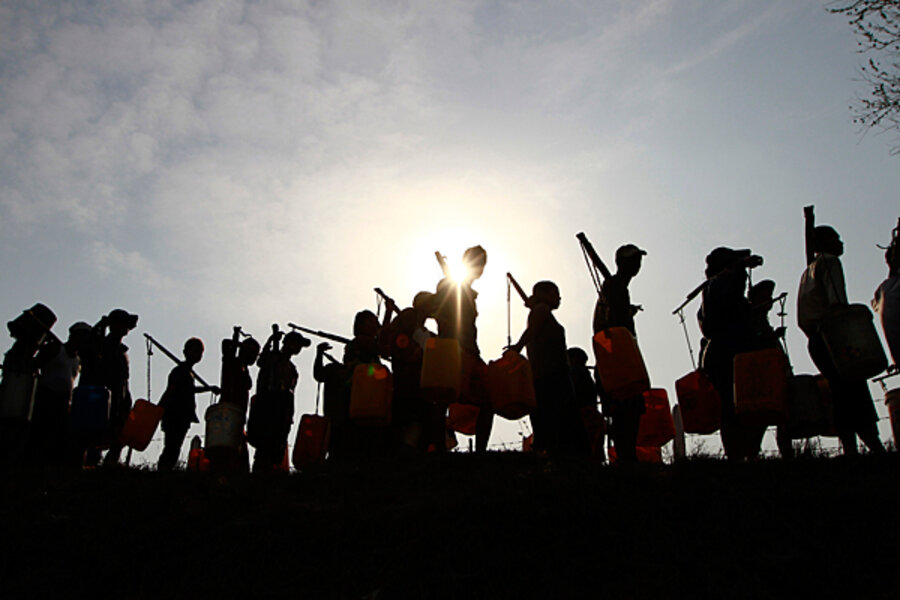Millennium Development Goal met: 2 billion access water
Loading...
| Boston
More than 2 billion people have gained access to improved water sources since 1990. The Millennium Development Goal – to halve the number of people without sustainable access to safe drinking water – was met in 2010, five years ahead of schedule, according to a report compiled by the United Nations and the World Health Organization. This was measured by greater access to improved water sources – though the assessment is somewhat controversial because there is no guarantee of the quality or regular availability of the water. Still, many see it as progress in creating an infrastructure for clean, sustainable water access.
Some 89 percent of the global population is now using "improved" water sources, which are protected from outside contamination and include piped water into homes or yards, protected wells, and rainwater catchment. The progress is noteworthy given many countries' exploding populations, where growing needs can cancel out gains. Almost half the 2 billion people whose access to water sources improved since 1990 live in fast-growing China and India.
There are vital health and social implications to better water access. Every year, cholera affects millions of people, and 3,000 children die daily from diarrhea. Both can be linked to dirty water. Women in particular may benefit: They spend an estimated 200 million combined hours a day collecting water, according to water.org. Clean water access close to home increases school attendance for girls, reports UNICEF, and can free women to take on income-earning jobs.
"It's a great positive, but the caveat is that the progress hasn't been very even," says Tom Slaymaker, senior policy analyst at WaterAid. Some 780 million people are still without access to improved water sources, most of whom live in sub-Saharan Africa. "The next goal should be even more ambitious," Mr. Slaymaker says.







